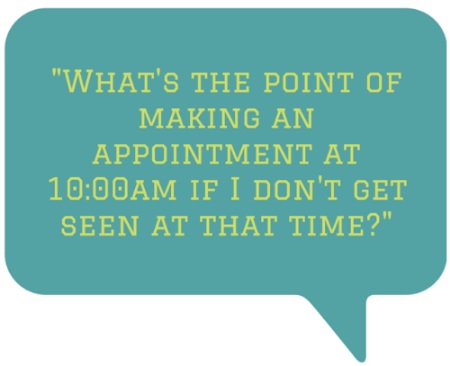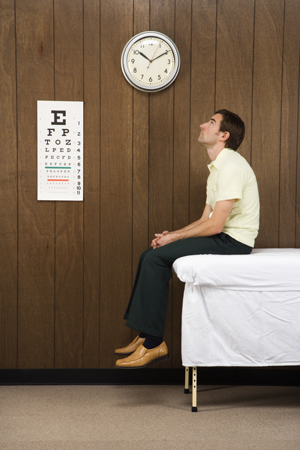Diluted Healthcare
Health care becomes diluted when health care providers do not have enough time to give you the attention needed to get you as healthy as possible.
I’m going to be using a few insurance terms throughout this article, so here’s a list of definitions and examples you can refer back to:
(Health Care) Provider – a licensed professional that is providing a health service to you. Like a physician, nurse, physical therapist, psychologist, dentist, etc.
Deductible – the amount you owe for health care services before your health insurance plan kicks in and begins to pay for all or a portion of the cost. If your deductible is $1,000, you have to pay for the $1,000 out of your pocket before your insurance plan starts to help you out.
Copay – a fixed cost for certain health care services. This is determined by your health insurance. Your plan may state that your copay for each physical therapy visit is $50 or each physician visit is $15. For most plans, this rate takes place after you’ve met the deductible. For a $1,000 deductible, if the physician visit was $200, you have to pay $200 out-of-pocket each time you go. Once you’ve spent $1,000 for that year then the $15 copay rate will take effect.
Reimbursement – Payment from insurance companies to health care providers or patients.
Moving on…
You know what the typical physician visit is like. I’ll walk you through it below:
9:45am – You arrive at the clinic 15 minutes early to fill out all the paperwork as instructed by the office staff.
10:00am – Paperwork is done and turned in. Now you sit among several other patients in the waiting room and start reading a magazine.
10:20am – You’re done flipping through the magazine and still left waiting.
10:30am – Anxiousness sets in. You contemplate asking the office staff if you’ll be seen soon. You begin to wonder, “What’s the point of making an appointment at 10:00 if I don’t get seen at that time? That the whole premise of an appointment – that you’ll be seen at a certain time. I could have stayed at work longer”
10:31am – Finally the medical assistant brings you back to take your blood pressure and other vital signs.
11:00am – The medical assistant finishes getting information from you and lets you know that the physician will be in next. Then you’re left to wait again.
11:15am – You’re still waiting. You’ve read every body part labeled on the anatomy chart on the wall. You begin to get hungry and are not sure if you’ll make it out before you become HANGRY.
11:25am – The physician comes in and does his assessment, tells you what to do about it then tells you to talk to the front office about getting your prescription and making your next appointment. The conversation is so quick that you end up forgetting to ask half the questions you thought of before the appointment.
11:30am – At the front desk, you’re charged the full price of $150 for the visit because you haven’t met your deductible yet. You’re finally free of the clinic and can move on with your life.
This is diluted health care. An office visit in which you only got 5 minutes with the person you wanted to see, yet you were there for nearly 2 hours.
When I was the patient in situations like this, I used to get frustrated and angry at the clinic because I felt I wasted so much time. I felt it was
inconsiderate to keep me waiting for so long. My time with the physician felt so rushed.
Now that I’m working in the medical field and know other physicians, I see that they are really overloaded and don’t intend to make you wait. Behind the scenes, they are doing their best to provide all their patients the best care they can. The cause of the problems is declining reimbursement from insurances. Health care practices are forced to see lots of patients in order to earn enough reimbursement to be able to keep the business running. They are put in a position where they must sacrifice quality of care in order to remain a sustainable business.
Even if you’re a really knowledgeable, cutting-edge and caring health care provider, these circumstances do not allow patients enough time to provide the thorough, high-quality care they are capable of.
In physical therapy, the care is diluted when clinics allow patient appointments to overlap and see 2, 3 or more patients at the same time. This means that a patient will likely get only 15 minutes of time with the physical therapist, then get passed off to an assistant or aide for the remainder of the appointment. Not to mention wait times and time spent on passive treatments that do not fix you, like ultrasound.
Say you haven’t met your deductible yet, and you’ve been told you need physical therapy 2 times a week for 4 weeks. A typical PT clinic will charge $50-$100+ per visit if you have to pay full price. Then you get plugged into the clinic just like everyone else. You may have an appointment scheduled at the same time as someone who’s copay was $5, yet you paid $75 to be there.
That person could come for 15 visits before they spend what you pay for one visit! After 8 visits, you would have spent $600. Yet you’re going to receive the same quality of care that they do. In my opinion, that’s not fair.
So what’s the solution?
All over the nation, health care providers are realizing the fix it to stop agreeing to low reimbursements from insurance companies. One by one, providers have decided to drop in-network contracts because the reimbursement is too low to stay in business. Some, like El Paso Manual Physical Therapy, decide to be 100% out-of-network so that their revenue is not dictated by insurance companies. Physicians are developing concierge practices where you pay a membership fee not covered by insurance and in return get more access to physician, some even giving you their cell phone number.
This Leaves You With A Decision.
Do I want to go somewhere I can use my insurance and possibly get subpar care?
Or do I want to go somewhere out-of-network and get the best care available?
A common misconception I hear people say is, “If you don’t take my insurance, you’re too expensive.”
I can’t speak to any other health care company, but for El Paso Manual Physical Therapy, we are rarely more expensive than a typical PT clinic. We are so good at what we do, that we usually see patients once a week on average. We make sure to give you 1-2 exercises you need to do on your own to get better. After that, we only see you to perform hands-on manual treatment that you cannot do yourself.
Check out the chart. The numbers speak for themselves. After we’re done with physical therapy, you can get a receipt that you can submit to your insurance company and possibly be reimbursed, depending on your insurance plan. That potentially makes us even cheaper!
Treatment with us is 100% one-on-one. It’s just you and the physical therapist for a full hour. Our patients leave with a clear understanding of their condition and a straightforward plan on how to resolve it.
If you’re in the El Paso area and want to get the best physical therapy care in the area give us a call or send us a message via the button below.




